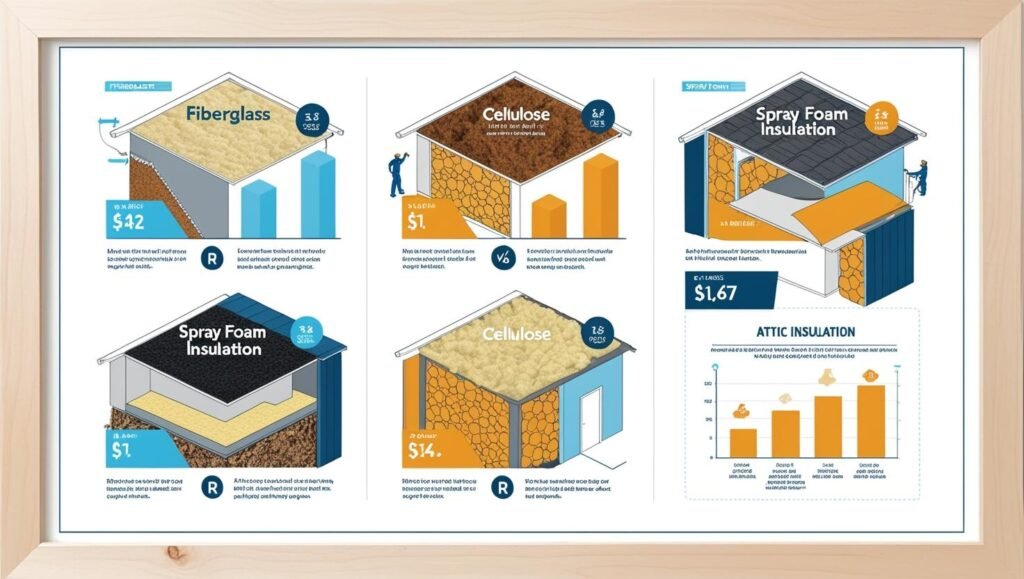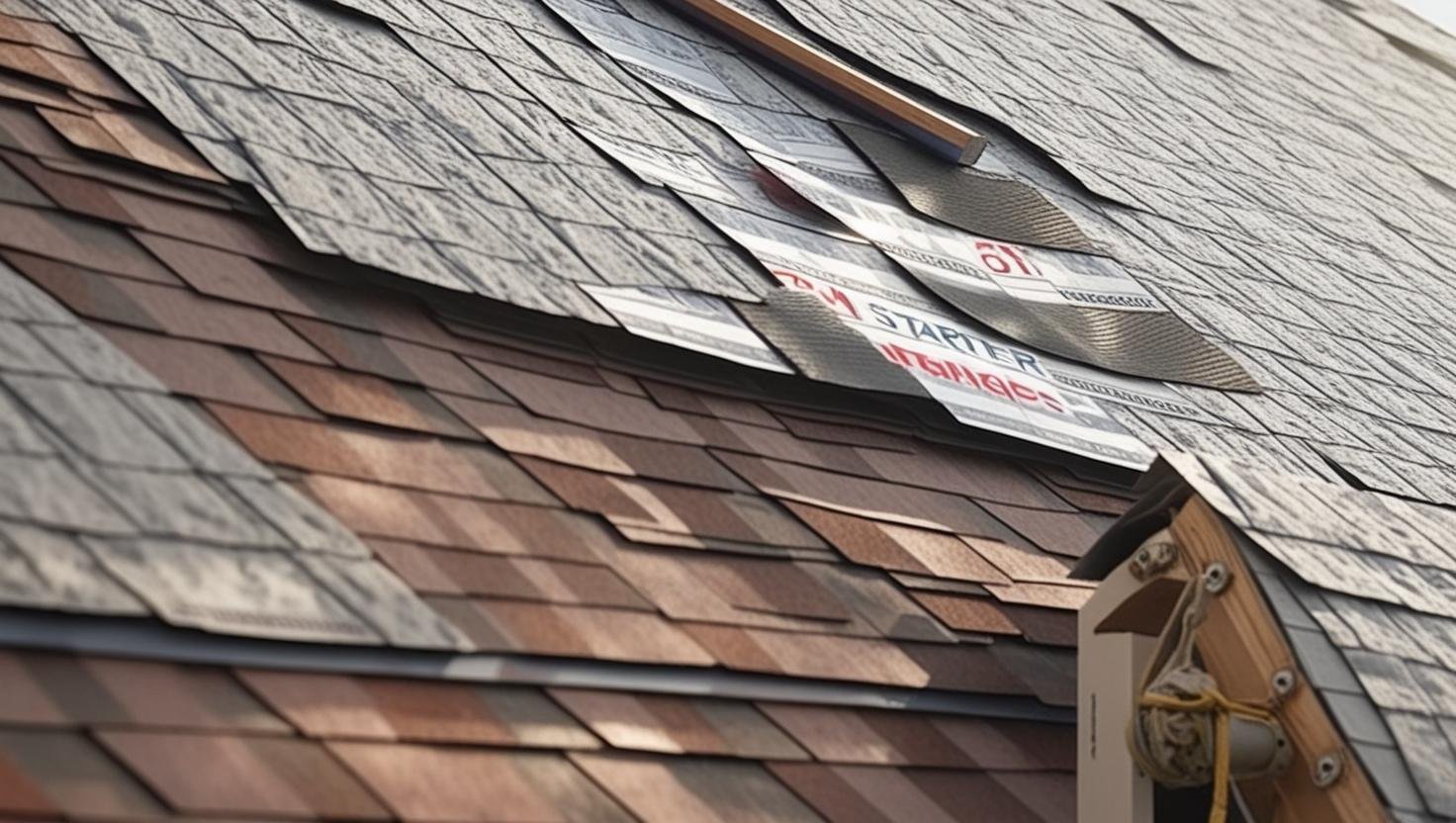Attic Insulation Options
Table of Contents
ToggleKeeping your home warm in winter and cool in summer starts with the right attic insulation. Without proper insulation, heating escapes through the attic roof, causing your energy bill to rise and putting stress on your bank account. Choosing the best insulation depends on several factors, including budget, property needs, and available options. Whether you plan to install it yourself or hire an expert home inspector, it’s important to consider different types of insulation and their pros and cons. Some materials are more efficient at blocking heat loss, while others may be more affordable or eco-friendly. Poor insulation can be problematic, making it harder to keep your thermostat at an even keel throughout the year. Before making a decision, take time to invest in research, compare insulators, and think about long-term priorities. Proper insulation not only keeps your summer vacation savings intact but also adds value to your home. With so many situations and risks to consider, understanding the definition of good insulation and how it affects your home makes all the difference.
Key Facts About Attic Insulation
The best insulation for your attic depends on budget, climate, and the condition of your attic roof. The R-value, measured in per-inch units, determines effectiveness in trapping heat and preventing it from exiting the building. In older homes, outdated insulation may need a replace to improve thermal resistance. Common materials include fiberglass batts, cellulose, spray foam, and loose-fill fiberglass, with options for recycled materials to suit environmental preferences.
For specific needs, blown-in insulation is a cost-effective solution, while spray foam provides strong air sealing but has a higher cost. Professional installation may be needed for some types, but DIY is possible for others. Considering long-term savings, energy efficiency, and ease of installation will help homeowners make the right performing choice.

Attic Insulation Types: Pros and Cons
1. Fiberglass Batt Insulation
Fiberglass batt insulation is a widely used attic insulation option known for its affordability, fire resistance, and soundproofing properties. It consists of glass fibers and recycled material, making it an eco-friendly choice. This insulation type comes in batts or rolled sheets, which can be easily installed between joists. While it provides moisture resistance, improper installation can lead to sagging and reduced efficiency, particularly in irregular spaces. Homeowners considering DIY installation should take safety precautions, as fiberglass can be harmful if touched or inhaled. Despite its disadvantages, fiberglass batt insulation remains a cost-effective and fire-resistant solution for new construction and renovations.
Pros
- Cost-effective and readily available, making it an affordable insulation option
- Made from recycled material and glass fibers, contributing to eco-friendliness
- Available in batts or rolled sheets, allowing for easy installation between joists
- Fire-resistant, helping to prevent flames from spreading
- Provides soundproofing, reducing external noises and containing internal sound
- Suitable for DIY installation, saving on professional labor costs
- Offers moisture resistance, preventing mold and mildew buildup
Cons
- Fiberglass can be harmful if touched or inhaled, requiring gloves and a mask for safe handling
- Can sag or become less effective in irregular spaces over time
- If it absorbs moisture, it may attract rodents and cause infestations
- Requires proper installation to ensure long-term insulation efficiency
2. Blown-In Fiberglass Insulation
Blown-in fiberglass insulation is a reliable choice for attic insulation, offering energy efficiency, air quality improvements, and effective temperature control. Using a blowing machine, the insulation spreads evenly across framing, pipes, and wiring, sealing cracks and tight voids better than traditional batt insulation. While its eco-friendly composition and moisture resistance make it appealing, it does require periodic maintenance as it may settle over time. Homeowners must also consider safety hazards and health risks, such as fibers becoming airborne during installation. While DIY is possible, professional installation is often recommended for the best results.
Pros
- Eco-friendly and made from fibers that improve energy efficiency
- Uses a blowing machine to evenly fill tight voids, cracks, and irregular spaces
- Helps trap hot air and block cold air, maintaining a stable R-Value
- Faster installation compared to other insulation types, completing in just a few hours
- More resistant to damp conditions than cellulose, reducing the risk of mold
- Improves air quality by preventing hotspots and temperature imbalances
- Can be a cheap option when compared to other insulation methods
Cons
- Can settle over time, requiring maintenance to retain insulation efficiency
- A past study suggested reduced performance at certain degrees Fahrenheit, though this is debated
- Comes with safety hazards, requiring gloves and protective gear for handling
- Potential health risks, such as allergies, due to airborne fibers
- Requires a special machine for proper application, making professional installation more common
3. Blown-In Cellulose Insulation
Blown-in cellulose is a widely used attic insulation method that balances affordability with fire resistance and effective heat retention. Thanks to its recycled material composition, it’s considered eco-friendly, and its dense material helps limit air movement. However, it is highly absorbent and needs a vapor barrier to prevent moisture issues like mold and rotting. The installation process can be messy and may require professional handling, especially with wet-spray application. While it is a cost-effective solution, homeowners should weigh its benefits against potential drawbacks like maintenance, labor-intensive removal, and chemical treatment limitations.
Pros
- Eco-friendly and made from recycled material like newspapers, cardboard, and wood
- Uses a blowing machine for even distribution, reaching tight areas in the attic
- Higher R-Value than fiberglass batts, providing 23 percent more thermal efficiency
- The dense material helps control air movement, reducing wind-washing
- Treated with boric acid for fire resistance and some insect control
- Can be a cost-effective option, being about 1/4th less expensive than fiberglass batts
- Professional installers use wet-spray application, adding water to reduce dust and improve the insulation value per inch
Cons
- Absorbs moisture, making it prone to mold, mildew, and rotting
- Requires a vapor barrier to prevent water damage and loss of insulation efficiency
- If it gets damp, removal is labor-intensive and must be done bit by bit rather than as a single bag
- The chemical treatment for rodents and insect activity is not always effective, despite marketing claims
- Does not create a strong air barrier, making it more susceptible to frost
- The mining of boron for boric acid raises environment concerns
- Can be messy to install, with densely packed fibers that require an insulation blower
4. Spray Foam Insulation
Spray Foam Insulation Overview Spray foam insulation is an exceptional option for attic insulation, offering outstanding energy efficiency and an effective airtight seal that significantly reduces air leakage and temperature imbalances. With an R-value that can reach up to 8.0, it provides superior thermal insulation, making it ideal for both new constructions and renovations. Despite its higher cost and the need for skilled installation, the benefits of spray foam, including its ability to fill complex spaces and act as a vapor barrier, make it a worthwhile investment. However, homeowners must consider the potential health risks from off-gassing and ensure proper ventilation to manage moisture.
Pros
- Eco-friendly and improves energy efficiency significantly by creating an airtight seal.
- Expands to fill tight voids, cracks, and irregular spaces, preventing air leaks.
- High R-value between 5.6 and 8.0, enhancing thermal performance and reducing heating and cooling costs by up to 50%.
- Acts as a vapor barrier, maintaining stable indoor temperatures and improving air quality.
- Provides a long-term insulation solution with minimal temperature fluctuations.
Cons
- Higher upfront cost compared to other types of insulation.
- Requires professional installation due to the complexity of application and use of specialized equipment.
- Off-gassing during installation can release harmful chemicals, posing health risks.
- Flammable if not treated with fire-retardant chemicals; proper safety measures are necessary during installation.
- Moisture damage susceptibility, necessitating adequate attic ventilation to prevent mold and mildew.
5. Batt and Roll Insulation
Batt and Roll Insulation Overview Batt and roll insulation is a traditional choice for attic insulation, known for its cost-effectiveness and ease of installation. Typically made from fiberglass, mineral (rock or slag) wool, or natural fibers, it offers good thermal resistance and soundproofing capabilities. It’s available in pre-cut batts or continuous rolls that can be trimmed to fit. While it provides a solid air barrier, it does require precise installation to avoid gaps that diminish its insulating properties. Although it is susceptible to moisture and may require protective gear for safe handling, its affordability and availability in various R-values make it a popular option among homeowners looking to improve their home’s insulation.
Pros
- Eco-friendly, often made from natural fibers like cotton or sheep’s wool, or recycled materials such as fiberglass and rock wool.
- Easy to install by simply rolling out or fitting between joists, rafters, and wall studs.
- Effective at soundproofing, reducing noise transmission between floors and rooms.
- Provides an air barrier and flame-resistant facing, enhancing safety and energy efficiency.
- Available in a variety of thicknesses and R-values (R-13 to R-21), making it versatile for different climate needs.
- Cost-effective, especially when compared to more advanced insulation types like spray foam.
Cons
- Susceptible to moisture damage, which can lead to mold growth and musty odors if not properly ventilated.
- Requires careful installation to avoid gaps that can significantly reduce its effectiveness.
- Settles over time, which may require additional layers or maintenance to retain optimal thermal resistance.
- Potential for airborne fibers, which can irritate skin and airways, necessitating the use of protective equipment during installation.
- Not as effective at sealing very irregular spaces compared to spray foam or blown-in insulation.
6. . Concrete Block Insulation
Concrete Block Insulation Overview Concrete block insulation, including options like AAC and ACC, offers a robust solution for insulating new constructions and major renovations, especially in the attic where stable temperatures are crucial. These blocks serve not only as structural elements but also incorporate insulation directly within the block, enhancing the building’s energy efficiency. While they offer significant benefits in thermal regulation and structural integrity, their application requires careful consideration of moisture management and installation techniques to ensure long-term effectiveness. Ideal for scenarios where the insulation needs to serve multiple roles, concrete block insulation remains a potent choice for those looking to invest in durable and efficient building materials.
Pros
- Eco-friendly, utilizing materials like autoclaved aerated concrete (AAC) which is made up of up to 80% air and lightweight.
- Improves energy efficiency by incorporating insulating materials within concrete blocks, such as polystyrene beads or rigid foam inserts.
- Thermal mass of the blocks helps moderate indoor temperatures, making spaces like attics more comfortable.
- Offers effective insulation by filling cores with insulation, which raises the average wall R-value significantly.
- Blocks can be easily sawed, nailed, or shaped with ordinary tools, allowing for versatile applications in construction.
- Provides structural strength when cores are filled, and autoclaved blocks offer improved fire resistance and moisture resistance compared to traditional concrete.
Cons
- Installation is more complex and requires professional skills, especially for AAC or ACC which may need special handling due to their moisture absorption tendencies.
- May involve higher initial costs due to the material itself and the complexity of installation.
- Potential problems with moisture and insects, particularly if the concrete blocks are exposed or not properly sealed.
- Concrete blocks, especially those not treated or properly installed, can be susceptible to water damage, leading to durability concerns.
- The insulating value can be compromised if not installed correctly, particularly in aligning and filling the blocks effectively.
Benefits of Installing the Insulation That’s Best for Your Attic
Efficient attic insulation not only ensures comfortable living conditions by stabilizing indoor temperatures but also significantly reduces energy costs, making it a valuable upgrade for any home.
- Improves air quality: Traps pollutants such as mold, smoke, and radon, which helps prevent respiratory issues.
- Maintains stable temperatures: Minimizes temperature fluctuations between upstairs and downstairs rooms, promoting uniform warmth or coolness.
- Increases home value: Acts as an attractive selling point for new homebuyers looking for energy-efficient homes.
- Enhances usability of space: Converts the attic into practical spaces like a spare bedroom or workspace.
- Energy savings: Proper insulation leads to lower heating and cooling costs, effectively saving money on utility bills.
- Protects structural integrity: Helps maintain the roof and structural elements by reducing potential damage from moisture and heat.
Conclusion: Attic Insulation Options
When it comes to attic insulation, the decision should hinge on a careful assessment of specific needs tailored to each homeowner. Professional home insulation services can provide expert advice to help you select the best option that aligns with your home’s requirements for energy efficiency and comfort. A well-insulated home not only brings significant energy savings but also enhances the overall value of the property. The installation of the chosen insulation should guarantee optimal performance, and with the right investment, the long-term benefits include maintaining a consistent indoor climate and reducing ongoing energy costs. Ultimately, the choice of insulation should be influenced by these factors, ensuring that each homeowner achieves a balance between cost, effectiveness, and sustainability.



